The modern passenger elevator was not invented by a single person. The concept of vertical transportation has been around for centuries, and various types of elevators and lifting mechanisms were developed and used throughout history.
The development of elevators involved the contributions of several individuals over time, such as Elisha Graves Otis, Werner von Siemens, and others.
Table of Contents
Who Invented The Elevator?
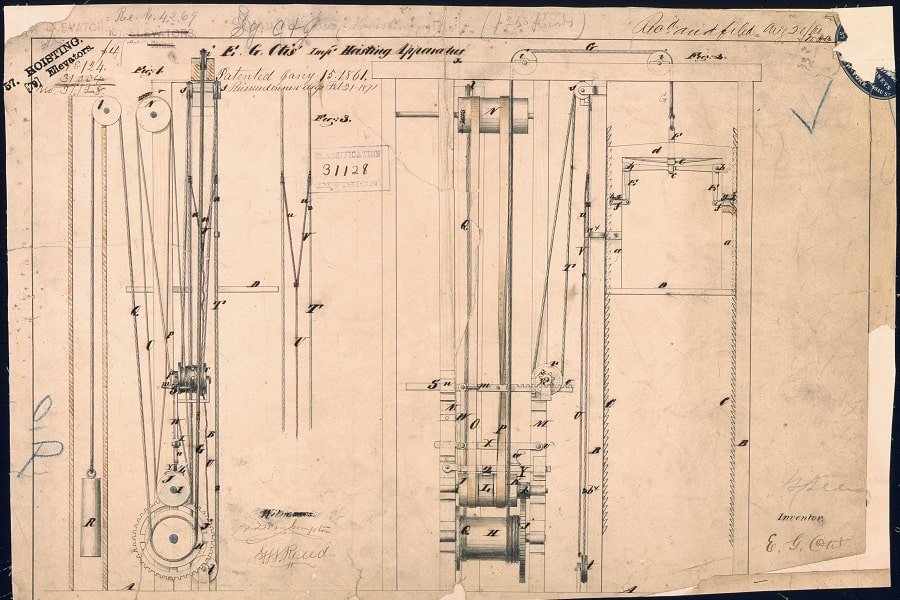
The first elevator was invented by Elisha Graves Otis in 1852 and was first introduced at the Crystal Palace Convention in New York City.
His machine was equipped with a safety brake (“hoists”) that ensured optimal security and restrained the elevator in case an accident was to happen. This was different from the elevator patented earlier by Otis Tufts, another inventor who specialized in elevators. His design was deemed to be too expensive and occasionally unsafe due to the lack of safety mechanisms.
As a result, Elisha Graves Otis is credited to be the person who invented the elevator as we know it.
Elisha Otis and His Revolutionary Invention
Elisha Otis was born in 1811 in Vermont and had a flair for invention. Before revolutionizing the elevator game, Elisha Otis dabbled in wagon wheel brakes and steam engines.
As the 1850s unfolded, Elisha Otis turned his attention to elevator design, concentrating on the development of a crucial feature that would distinguish his invention from those that came before it – a safety brake. People were understandably apprehensive about riding elevators during this era due to the risks involved. Elisha Otis recognized that his creation needed a failsafe mechanism to allay public fears and earn their trust.
Elisha Otis’s ingenious brake system employed a set of spring-loaded arms that would activate in the event of an elevator cable snapping, halting the cab’s descent and bringing it to a safe stop. This innovative mechanism was the key to transforming elevators from a risky mode of transportation to a reliable and secure means of vertical travel.
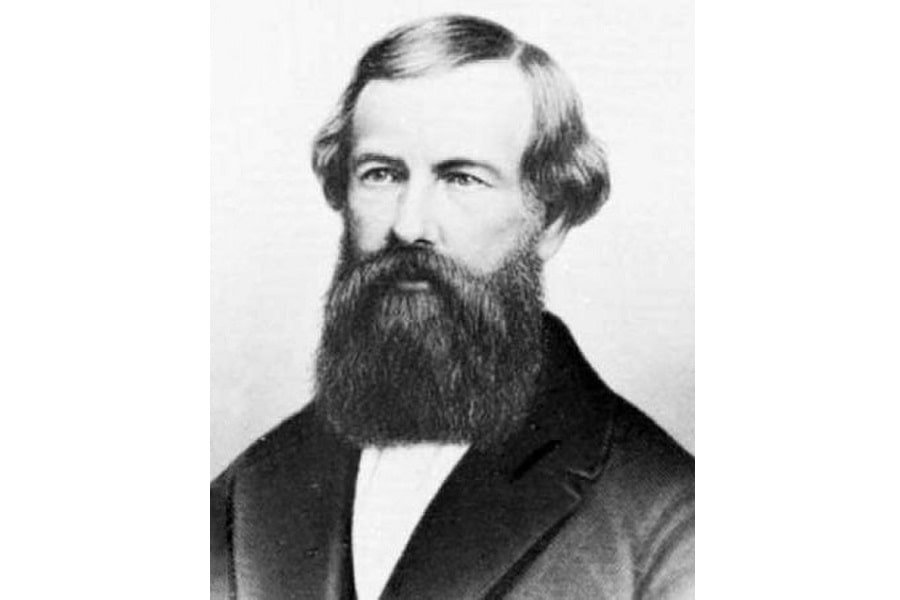
Showcasing the Elevator
To showcase the effectiveness of his invention, Elisha Otis orchestrated a daring public demonstration at the 1853 New York World’s Fair. Amidst an enthralled audience, Elisha Otis boldly cut the cable of an elevator platform he was standing on.
The crowd watched in awe as his safety brake system engaged, preventing him from plummeting to the ground. This dramatic display of courage and engineering prowess captivated the public. It cemented Elisha Otis’s reputation as an innovator in the elevator industry.
Following his triumphant demonstration at the World’s Fair, Elisha Otis established the Otis Elevator Company. The company quickly gained momentum and became a significant player in the elevator market. Thanks to Elisha Otis’s revolutionary safety brake, elevators were viewed as a secure means of transportation, paving the way for the development of increasingly taller buildings and forever changing the face of urban landscapes worldwide.
For the first time in human history, skyscrapers could become a practical reality.
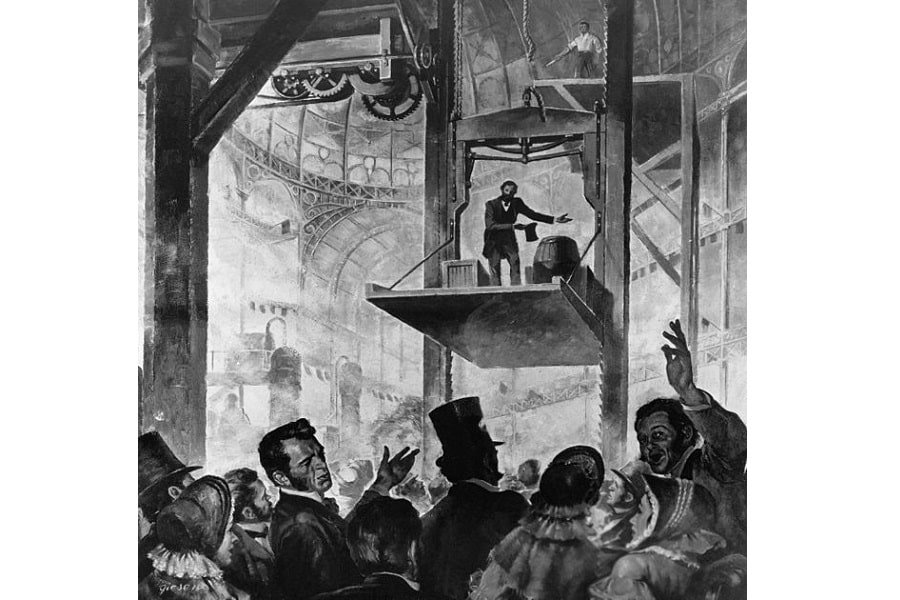
The Otis Brothers
After Elisha Otis’s revolutionary invention and the establishment of the Otis Elevator Company in 1853, the company experienced significant growth and played a pivotal role in shaping the elevator industry.
Orders for the new technology doubled and business continued to boom for many years to come.
Unfortunately, Elisha Otis died in 1861, but his sons, Charles and Norton Otis, the Otis brothers, carried on their father’s legacy by continuing to lead the company.
Otis Elevators Today
Under the guidance of the Otis brothers, the Otis Elevator Company expanded its operations and continued to innovate. In 1889, the company installed elevators in the iconic Eiffel Tower in Paris, further solidifying its reputation as a global leader in the elevator market.
Even though Elisha Otis died, the Otis Elevator Company continued to grow the elevator business, merging with other companies and expanding its product offerings. The company became a pioneer in developing escalators, moving walkways, and other transportation systems.
By the early 20th century, Otis passenger elevators were being installed in many of the world’s most famous skyscrapers and tall buildings, such as the Empire State Building and the Chrysler Building in New York City.
Today, the Otis Elevator Company continues to be at the forefront of innovation and sustainability in the vertical transportation industry, consistently pushing the boundaries of technology and design to improve the safety, efficiency, and accessibility of elevators, escalators, and other forms of transportation within buildings.
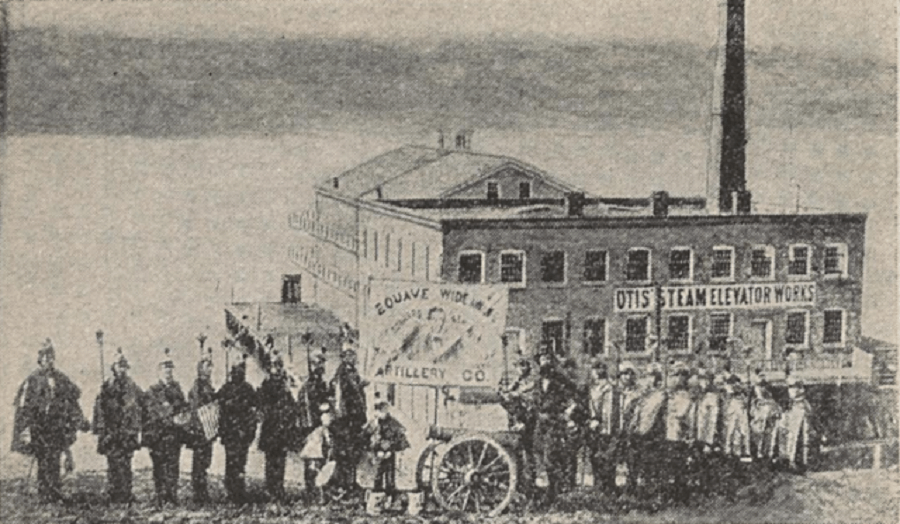
Who Invented the Elevator Before Otis?
While Elisha Otis is the most famous name associated with the modern elevator, a few other inventors contributed to the elevator’s development before him.
The ancient Greeks were well-known for their exceptional intellect and innovative ideas culminating in often surprising technologies.
READ MORE: 15 Examples of Fascinating and Advanced Ancient Technology You Need To Check Out
The legendary mathematician Archimedes was a shining example of this. Although he did not invent the modern elevator as we know it today, Archimedes created the earliest documented lifting machine featuring hydraulic systems around 236 BC. This rudimentary yet functional device used ropes, pulleys, and a hand-operated winch to lift cumbersome objects.
READ MORE: Who Invented Math? The History of Mathematics
While it certainly lacked the comforts and conveniences of contemporary elevators, Archimedes’ creation was an essential milestone in developing lifting mechanisms that aided in elevating heavy equipment.
Elevators During the Middle Ages
Advancing to medieval France, King Louis XI enjoyed the benefits of an early form of an elevator within his castle. Affectionately referred to as “The Flying Chair,” this regal apparatus enabled the King to easily travel between floors.
Although it may have provided little comfort and smoothness, The Flying Chair was a convenient alternative to traversing the numerous stairs in heavy, elaborate royal attire.
It comes as no shock that the esteemed polymath Leonardo da Vinci played a role in the progression of elevator technology and turned them into a practical reality. While working on the design for the Milan Cathedral in 1493, Da Vinci conceived an ingenious inclined plane to transport sizable building materials.
Although his creation did not operate as a vertical elevator, Da Vinci’s design represented an early instance of a mechanically powered lift. His groundbreaking work laid the foundation for future innovations, eventually developing Elisha Otis’s iconic elevator design.

The Steam-Driven Elevator: An Industrial Leap Forward
Elisha Otis’s invention was undoubtedly groundbreaking, but the world of elevators was on the cusp of yet another significant transformation. The 1860s witnessed the emergence of the steam-driven elevator, which harnessed the power of steam engines to drive the lifting mechanism.
This novel technology enabled elevators to ascend to greater heights and transport heavier loads.
Who Invented the Steam-Driven Elevator?
Sir William Armstrong, an English engineer, and inventor, was the driving force behind the steam-driven elevator.
Armstrong was already well-versed in the realm of steam power, having previously invented the hydraulic crane and the Armstrong Gun – a highly effective steam-powered artillery piece. Armstrong developed the hydraulic accumulator based on his extensive knowledge and experience with steam technology, which was the foundation for his innovative steam-driven elevator system.
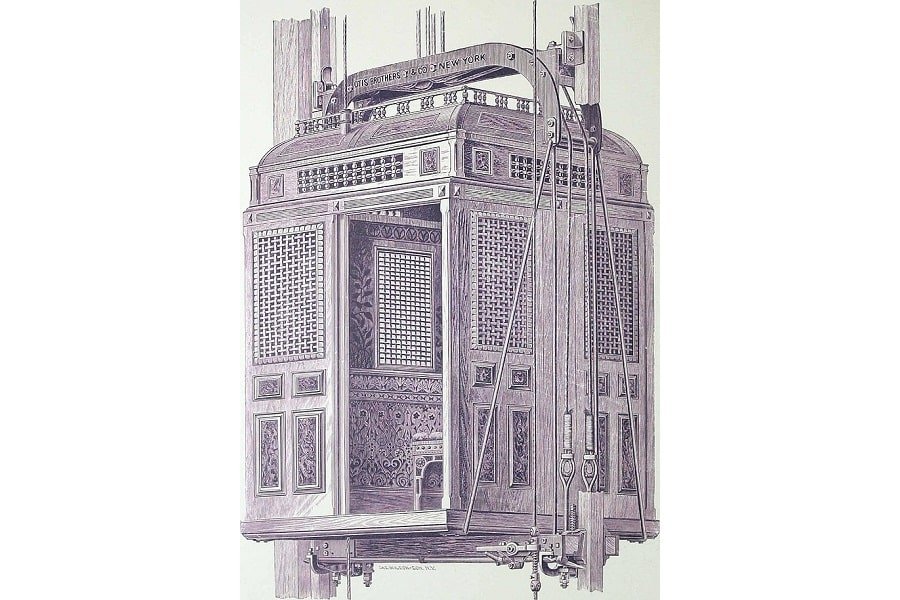
Beyond Steam: The Electric Elevator and the Future of Vertical Transportation
Not long after Elisha Otis invented the elevator that changed the game, the steam-powered passenger elevator may have revolutionized the elevator game further. But it was just the beginning. The late 19th century saw the introduction of the electric elevator, which would eventually become the industry standard.
Enter Werner von Siemens: The Pioneer of Electric Elevators
The electric elevator was first introduced by the German inventor Werner von Siemens in 1880. This new design used an electric motor to power the elevator’s lifting mechanism, providing a smoother, faster, and more energy-efficient ride.
This technological leap marked the beginning of the end for steam-driven elevators, which were eventually phased out in favor of their electric counterparts.
The 20th Century: Skyscrapers, Glass Elevators, and Beyond
Passenger elevators continued to evolve throughout the 20th century, with innovations such as automatic doors, push-button controls, and even glass-walled cabs that offered breathtaking views.
These advancements in elevator technology have led to the construction of some of the world’s most iconic tall buildings, from the Empire State Building in New York City to the Burj Khalifa in Dubai.
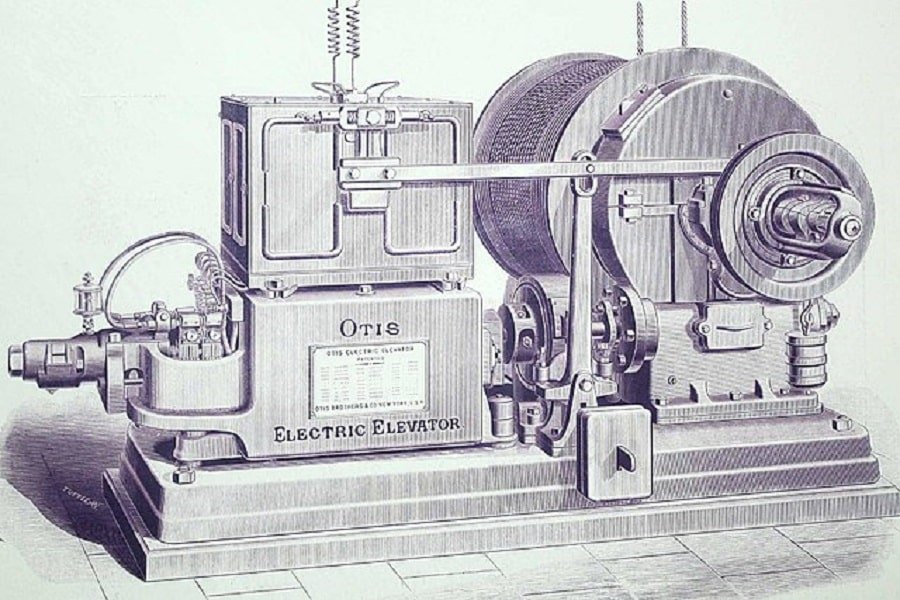
Elevator Innovations: From Water-Powered to Pneumatic Elevators
Elevators have come a long way since ancient Rome and Archimedes’ time.
Water-Powered Elevators: The Power of Hydraulics
In the early 19th century, elevators running on water wheel power were introduced. These elevators used the force of water to move pistons inside a cylinder, which lifted the elevator cab. Water-powered elevators were particularly popular in factories and mills, where a constant water supply was readily available.
READ MORE: Who Invented Water? History of the Water Molecule
Though they didn’t catch on for passenger use, they were crucial in developing hydraulic elevator systems and hoisting machinery.
Pneumatic Elevators: A Vacuum-Powered Dream
Another lesser-known elevator innovation is the pneumatic elevator, which uses air pressure to move the cab. These elevators operate like a pneumatic tube system, with the cab being pushed up and down inside an airtight shaft by changes in air pressure.
Although pneumatic elevators have been around since the 19th century, they’ve recently experienced a resurgence in popularity for residential use thanks to their compact design and energy efficiency, eliminating safety concerns.
The Safety Measures: Ensuring a Smooth Ride for All
Elisha Graves Otis’s safety mechanism is one of the most important parts of the elevator ensuring the safety of all passengers. However, there are a few other equally important components.
The Counterweight: Balancing the Load
One crucial safety feature found in most elevators is the counterweight. Attached to the opposite end of the elevator cab’s cable, the counterweight helps to balance the load and ensure a smoother, safer ride. By offsetting the weight of the cab and its passengers, the counterweight reduces the strain on the elevator’s motor, making it less likely to fail.
The Governor: Keeping Speed in Check
Another key safety feature is the governor, a device that controls the elevator’s speed. If an elevator starts moving too quickly, the governor activates the emergency braking system, bringing the cab to a safe stop. This ingenious device has been a staple in elevator design since the late 19th century and has undoubtedly saved countless lives.
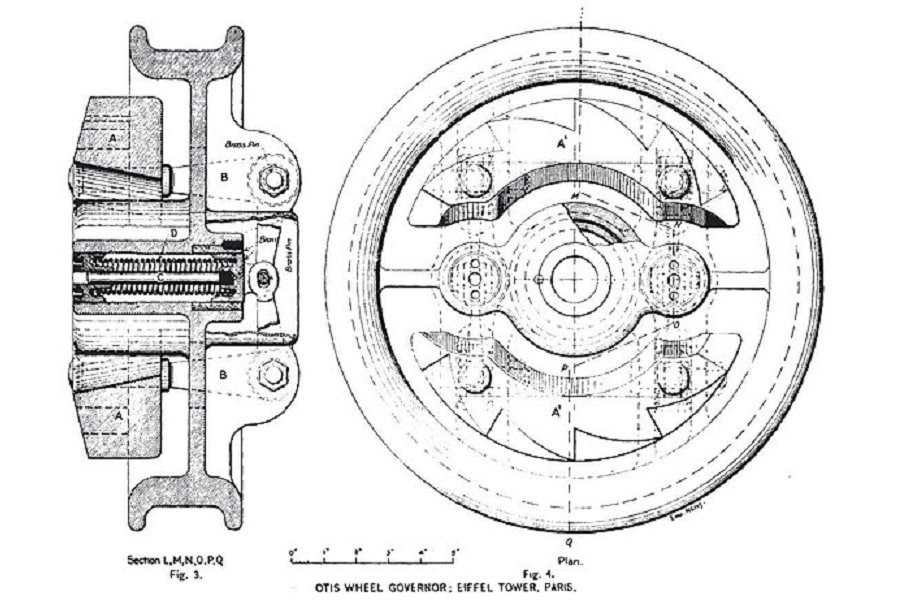
Earthquake and Fire Safety: Rising to the Challenge
As buildings have grown taller and more complex, elevator safety measures have evolved to address new challenges, such as earthquakes and fires. Modern elevators are equipped with sensors that can detect seismic activity and automatically bring the elevator to the nearest floor, allowing passengers to exit before the shaking worsens.
Similarly, elevators in many buildings are designed to return to the ground floor in the event of a fire, preventing passengers from becoming trapped in a potentially dangerous situation.
The Psychological Measures
Elevators aren’t just about getting from point A to point B – they’re also an experience in their own right.
Elevators have seen quite a lot of changes since Elisha Otis’s first design. From the soothing sounds of elevator music to the strategic placement of mirrors, here’s the psychology behind these familiar yet often overlooked aspects of the elevator experience.
READ MORE: A Brief History of Psychology
Elevator Music: A Soothing Soundtrack
Many people were understandably nervous about riding in a small, enclosed space in the early days of elevators. To help alleviate this anxiety, soothing background music was introduced, providing a pleasant distraction and creating a more relaxing atmosphere.
Today, elevator music is a staple of the ride. This little trick has helped save countless awkward encounters in a closed room stuffed with a stone-eyed crowd.
Mirror, Mirror on the Wall: The Illusion of Space
Ever noticed that most elevators have mirrors? This design choice is more than just a convenient way to check your hair before a big meeting – it’s a clever psychological trick. Mirrors create the illusion of more space, making the elevator feel less claustrophobic and more comfortable for passengers. Plus, they provide a handy distraction, giving riders something to look at during those awkward moments of silence.
References
https://web.archive.org/web/20150207161953/http://invent.org/inductee-detail/?IID=115
https://www.aaas.org/space-elevator
Rysdyk, Sam, Who Invented the Elevator? (March 24, 2009). Available at SSRN: https://ssrn.com/abstract=2141861 or http://dx.doi.org/10.2139/ssrn.2141861
Gray, Lee Edward. From Ascending Rooms to Express Elevators: A History of the Passenger Elevator in the 19th Century. Elevator World Inc, 2002.